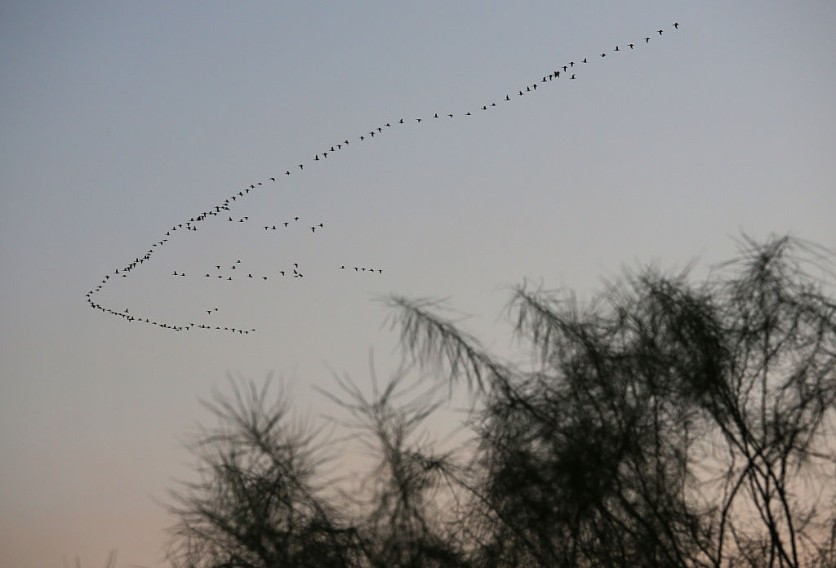Texans are being invited to join an important conservation effort as migratory birds make their seasonal journey across the state's night skies.
The Dallas Morning News reports that this migration, or "avian highway," sees a stunning variety of birds, from large whooping cranes to the smallest songbirds, heading to their northern breeding grounds.
The peak of this migration, from April 22 to May 12, brings nearly two billion birds of about 400 species over Texas, the Texas Parks and Wildlife Department confirms.

RIO GRANDE CITY, TX - DECEMBER 07: Migratory birds fly south over the U.S.-Mexico border on December 7, 2015 near Rio Grande City, Texas.
Texans Dim Lights to Safeguard Migratory Birds
To ensure the safe passage of these birds, a statewide initiative known as "Lights Out, Texas!" has been launched. This biannual campaign, initiated by the Cornell Lab of Ornithology and BirdCast in 2020, aims to reduce light pollution during migration seasons.
The campaign, which has garnered support from Dallas Mayor Eric Johnson's office, local businesses, and landmarks like Whitacre Tower and Reunion Tower, encourages Texans to dim their lights to minimize the risk of bird collisions with buildings and other structures.
The nocturnal nature of around 70% of North American migratory birds poses a unique challenge during migration. Light pollution, especially from urban areas, can disorient these birds, leading to building collisions.
Ornithologist Tania Homayoun from Texas Parks and Wildlife explains that birds do not perceive glass as humans do. They often mistake reflections for open airspace, which increases the likelihood of collisions.
Challenges to Bird Migration
Tragically, building collisions kill millions of birds annually in the United States. Estimates suggest that anywhere from 388 million to 965 million birds die each year due to collisions with manmade structures, making it one of the leading causes of bird mortality.
Incidents such as the collision of nearly 1,000 migratory songbirds with a glass convention center in Chicago in 2023 highlight the urgent need for conservation efforts.
However, there is hope. Studies have shown promising results from dimming or turning off lights during migration seasons. A 2021 study published in the Proceedings of the National Academy of Sciences found that darkening windows of urban buildings in Chicago reduced bird collisions by 60% over 20 years.
Similarly, retrofitting governmental building windows with bird-safe film in Portland, Oregon, led to a 94% reduction in bird collisions over just one year.
What You Can Do to Help
Volunteers can also contribute to bird conservation efforts through technology. The iNaturalist app allows volunteers to monitor bird collisions and deaths by reporting observations or taking photos.
Additionally, BirdCast's live migration tracker enables users to follow the northward journey of migratory birds in real time, enhancing awareness and understanding of bird migration patterns.
The significance of avian migration extends beyond Texas, as highlighted by a 2018 study estimating continental biomass flows of nocturnal avian migrants across the contiguous United States.
Stay posted here at Tech Times.
Related Article : New Study Reveals Male Songbirds Must Sing Daily to Look More Attractive to Females





